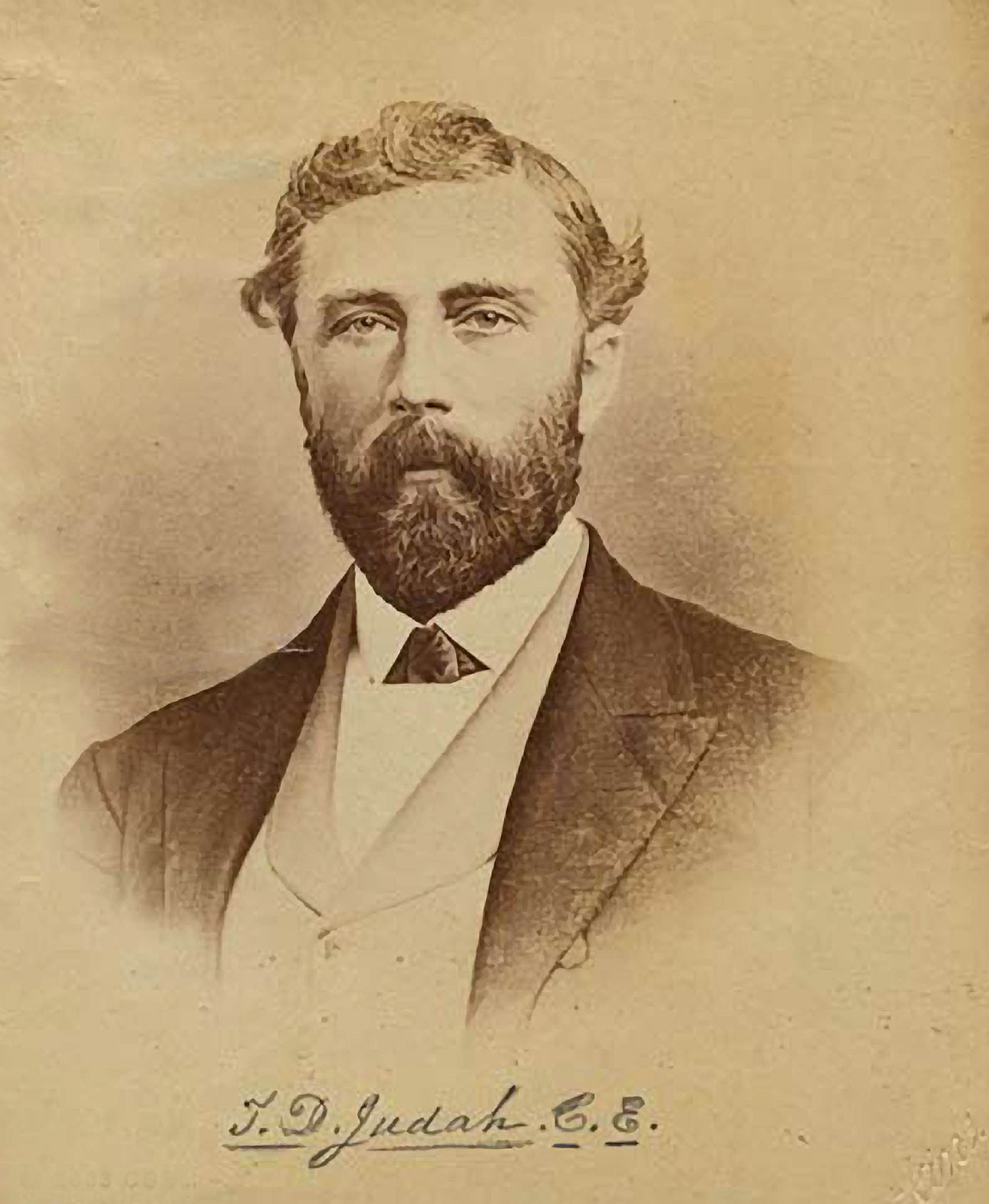
“If only the Sierra might be pierced.” Atlantic Monthly December, 1867
 You are standing on Mt. Judah, named for Theodore Judah, who was the driving force behind, and laid out the route of, the first transcontinental railroad.
You are standing on Mt. Judah, named for Theodore Judah, who was the driving force behind, and laid out the route of, the first transcontinental railroad.
“Crazy Judah” had some strange ideas. He wanted to build a railroad across the continent. People knew it could not be done. The grades would be too steep. The mountains couldn’t be crossed. Not only did he want to build the railroad, he wanted to start the western portion in California – 3,000 miles from the materials needed. Judah thought the railroad could cross the Sierra – the hardest part of the journey for wagon trains. San Francisco financiers laughed at him.
It took planning, wheeling and dealing, overcoming opposition, wooing investors, breaking with conventional wisdom, multiple survey trips, and convincing Congress. Judah did it all to get the transcontinental railroad started.
Judah's route of the railroad is along the ridges of the Sierra leading up to the summit. Most railroads travel along river valleys where there are gentle rises. The Sierra uplifted millions of years ago at a fault break near Reno. The Sierra hinged from the Central Valley of California and so there is an easy rise from the west along the ridge tops. There needed to be filling and cutting along with 15 Sierra tunnels but Judah's route was the least difficult.
Theodore Judah never got to see the completion of his vision. He died of Yellow Fever in 1863, the year construction started. In 1869 the railroad was completed using the route Judah had surveyed. Travelers could cross the country at the unheard of speed of 22 miles per hour. Where the wagon trains had taken 4-5 months and stagecoaches 25 days, railroad passengers could cross the whole country in ten days.
Mt. Judah was called Emigrant Peak until the 1930’s. It was Johnny Ellis, Lake Mary, who re-named the Peak Mt. Judah.

